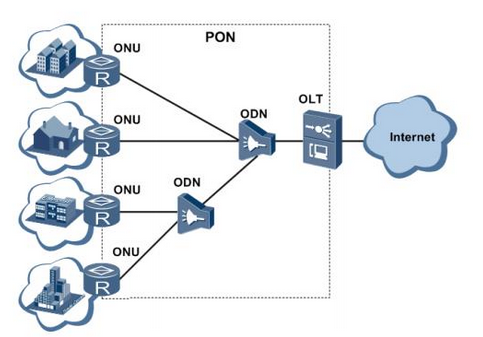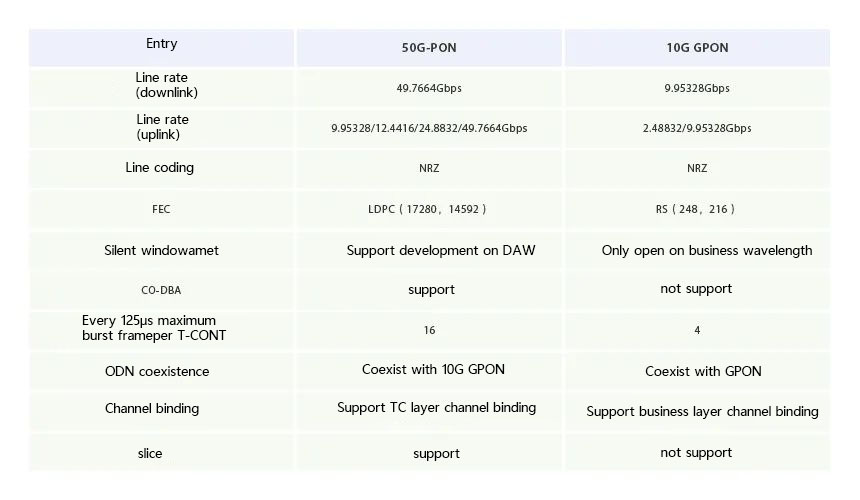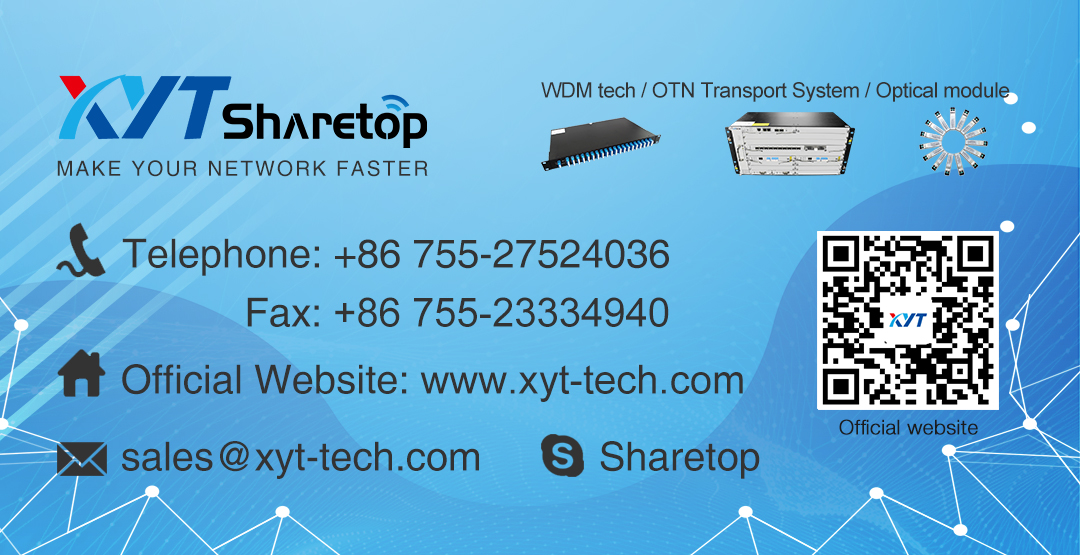
Review of PON technology development
PON technology is a broadband access technology based on passive ODN network. It adopts p2mp point to multipoint topology, independent uplink and downlink transmission wavelengths, and time division multiplexing of data. The ODN network connecting OLT and ONU in PON system adopts pure optical medium, which is passive in the whole process, has strong environmental adaptability, and is easy to expand and upgrade. In the past 10 years, PON technology has achieved great success and been deployed on a large scale due to its comparative advantages over copper wire access in terms of optical fiber, passive and p2mp. In the development of PON technology, standards organizations ITU-T / FSAN and IEEE have played a great role in promoting it. PON technology originated from the early APON / BPON. After several generations of development, GPON and EPON have been commercially deployed on a large scale, providing users with bandwidth access capacity of up to 100 megabytes. Its next generation 10G PON technologies such as 10G GPON and 10G-EPON have also been commercialized on a large scale, which can provide users with up to 1Gbps bandwidth, realize gigabit network coverage, meet the large-scale applications of 4K / 8K video services and the early import requirements of VR / AR services. With video service becoming the basic service of broadband network and PON technology gradually expanding from home wide field to government enterprise industry, such as telemedicine, industrial intelligent manufacturing, factory and mine communication, on the one hand, it puts forward higher requirements for bandwidth, on the other hand, it also puts forward corresponding requirements for delay, packet loss, jitter, service quality and user experience. For example, the bandwidth of VR service is required to exceed 1Gbps, the user experience improvement needs 5ms (RTT delay) low delay, while the end-to-end communication delay of telemedicine is less than 50ms and the jitter is less than 200 μ s。In order to meet the needs of business development in the post 10G PON era, IEEE and ITU-T / FSAN began to consider the technical research of the next generation PON after completing the standard formulation of 10G PON.

Mainstream technology direction of next generation PON: 50G-PON
It is generally recognized in the industry to increase the bandwidth of the next generation optical access network to 50Gbps. Therefore, how to upgrade the system bandwidth simply and efficiently has become a research hotspot in the field of PON. The development trend of the next generation PON technology after 10G PON mainly has two directions: one is to improve the single wavelength rate; Second, multi wavelength multiplexing improves the total rate. IEEE took the lead in launching the standard formulation of the next generation PON technology after 10G PON. It supports 25 Gbps downlink rate, 10Gbps / 25Gbps uplink rate and compatibility with 10G-EPON on a single optical fiber. For 50Gbps bandwidth requirements, multi wavelength Superposition Technology and channel binding technology are used to provide two 25Gbps channels to achieve 50Gbps rate. ITU-T / FSAN considers the scenarios of home users, enterprise users and Mobile Backhaul / forward transmission, and gradually forms the demand for the next generation PON, focusing on the 50G-PON technology with a single channel rate of 50Gbps. In 2018, ITU-T / FSAN launched the standard formulation based on single wavelength 50G-PON, named "g. HSP (G. higher speed PON)", which is expected to have commercial capacity in 2025. Before this time point, 10G PON will be deployed as the mainstream optical access technology in the industry on a large scale.

The requirements of 50G-PON include providing more than 4 times the access bandwidth, better service support capability, network protection / security, supporting the coexistence and smooth evolution of 10G PON, and being compatible with the existing ODN network as much as possible. The uplink and downlink wavelengths of 50G-PON work in the o-band and do not support coexistence with GPON and 10GGPON at the same time. FEC selects LDPC error correction algorithm. In order to better support low delay, 50G-PON technology introduces technologies such as dedicated activation wavelength (Daw) and codba (cooperative DBA). Using Daw technology, ONU is registered and activated through special wavelength, and the service wavelength is no longer allocated with silent window, which can reduce the transmission delay caused by registration window. Using codba technology, data can be forwarded directly without waiting, which can reduce the delay.caused by bandwidth scheduling.

Evolution and coexistence of 10G GPON technology to 50G-PON
In the network evolution, operators have always focused on making full use of existing network resources and saving upgrade and evolution costs. In order to realize the smooth evolution from 10g GPON to 50G-PON and meet the networking requirements of different services, 10G GPON and 50G-PON will coexist within a certain period of time. The first mock exam has been verified to be the most effective means to save the computer room deployment, reduce the energy consumption of optical access devices, effectively utilize the ODN resources of the existing network and reduce the cost of network construction of operators. Therefore, in the process of 50G-PON development, the two step migration mode can be considered. Firstly, it evolves from GPON to 10G GPON, and then evolves from 10G GPON to 50G-PON. It realizes the continuous upgrading of bandwidth while taking into account the network evolution and cost. The industry is committed to promoting the standardization of 50G-PON technology. At the same time, some contents and directions need to be further studied, such as the exclusive bandwidth requirements to support multiple operators or services in the future, as well as the delay requirements, performance and cost introduced to solve the tight uplink optical power budget of 50G-PON. From the current progress, it is expected that 50G-PON will have commercial deployment capability around 2025, and 10G PON technology will be deployed on a large scale before this time point, laying a solid foundation for the subsequent smooth evolution to 50G-PON.
XYThas been committed to promoting the standardization of 50G-PON and the continuous improvement of the industrial chain. It has many successful cases in PON transmission. Its own products also cover all parts from OLT to ONU equipment. Customers at home and abroad are welcome to negotiate and cooperate.
